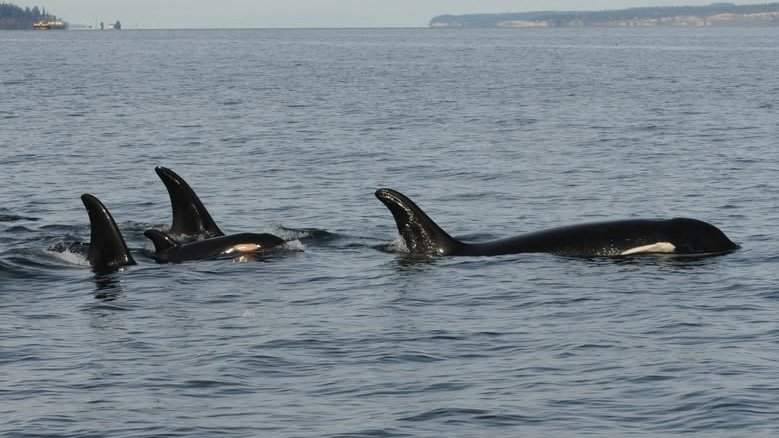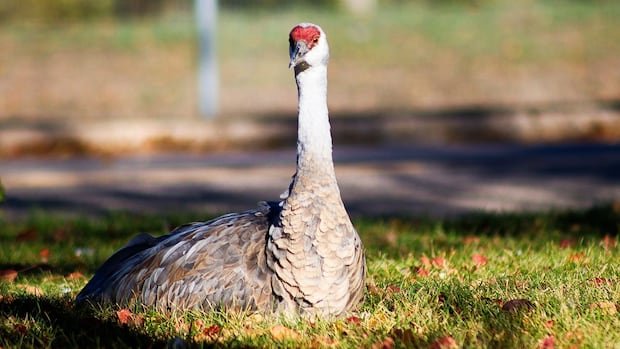The famous orca mother who caused a sensation around the world for carrying her dead calf for 17 days has suffered another tragic loss.
The US-based Center for Whale Research announced that calf J61, daughter of orca mother Tahlequah, had not survived to see the new year, in a statement released on New Year’s Day.
The calf was born just before Christmas, but was confirmed dead on New Year’s Eve, scientists said.
As was the case with the loss of her first daughter, Tahlequah has been seen carrying the body of her deceased second daughter with her. In 2018, the mother of four carried the lifeless body of her calf 1,000 miles off the south coast of British Columbia for more than two weeks.
“The death of any calf in the SRKW (southern resident killer whale) population is a tremendous loss, but the death of J61 is particularly devastating,” the center said in the statement.
“Not only because she was a female, who could one day have led her own matriline, but also because of the history of her mother J35, who has now lost two of every four documented offspring, both females.”
The statement said the entire team at the Whale Research Center is “deeply saddened” by the news of the loss.
“We will continue to provide updates when we can,” he said.
New Year’s Eve had been a bittersweet day for the center’s researchers, who had traveled to British Columbia waters for the first time to investigate reports of a new calf that had been born to the group of southern resident killer whales, nicknamed J -pod.
The mother of the new calf J62 is yet to be determined, as she had been swimming among several female orcas when the researchers made their visit. While the sex of the calf is not yet known, the baby appeared to be “physically and behaviorally normal,” according to the statement.
Before finding Tahlequah’s deceased baby, investigators had expressed concern about her health after noticing some behavior on the part of her and her mother. The center noted that resident killer whales have a very high calf mortality rate in their first year.
“We always have to worry about the southern residents… although we are always excited at the prospect of a new birth and a new member, we always do so with a bit of caution,” said Dr. Anna Hall, a marine zoologist and researcher. from UBC.
Hall said the news of the Tahlequah calf’s death was “devastating” and “beyond tragic,” and the behavior exhibited by the grieving mother, once again, only made it more so.
“If you go back to 2018, the world was captivated by the emotions expressed over the loss of their young calf, and then carrying that calf for 17 days was a true insight into the emotional loss of the animal,” he said.
“We are only beginning to understand [them]. We know that they are very complex. We know they live in a very complicated society, but understanding the emotional intelligence of these creatures is something we don’t really understand well. “She gave us great insight into what it takes for a mother who just lost a newborn,” Sala said.
“Here we are, six years later, and we see the same thing again.”
Misty MacDuffee, a conservation biologist who directs the WInd Coast Conservation Foundation’s Wild Salmon Program, said the endangered status of the southern resident killer whale population makes the loss particularly serious.
“Right now, we have more deaths than births and this population is not recovering or even maintaining itself,” he said.
“We are always very hopeful that these calves can make it through this first neonatal stage, which is really crucial.”
MacDuffee said the declining number of southern resident killer whales is a result of declining prey available to them, the “highly polluted” waters in which the whales swim and underwater noise that hampers the whales’ communication efforts. marine mammals.
“They need to listen and be heard to identify and catch their food and communicate with other members of their pack,” he said.
“The presence of underwater noise interferes with echolocation used to detect and catch prey, so the area where they hear and can be heard is shrinking. Not only do they not get enough prey, but it is harder to catch what there is,” he said.
MacDuffee said environmental groups are calling on the federal government to address the problems whales face, especially when it comes to new projects that interfere with local marine life.
“These whales swim in noisy, highly polluted waters, and we need to reverse those conditions to improve their survival,” he said.
“We are expanding the ports in the port of Delta, we have approved the Trans Mountain pipeline. “All of this is contributing to the degradation and quality of critical habitat within the Salish Sea and decisions to address that are not being made at the federal level,” MacDuffee added.
“We are really at the last moment for this population…. We can’t keep the calves alive. For this population to recover, those calves have to be kept alive, and the conditions that the females, the mothers, face have to improve for that to happen,” he said.
Researchers will monitor Tahlequah, along with the new calf J62, when conditions and the whales’ movements allow, scientists said.
With files from CTV News Vancouver’s Andrew Johnson.









